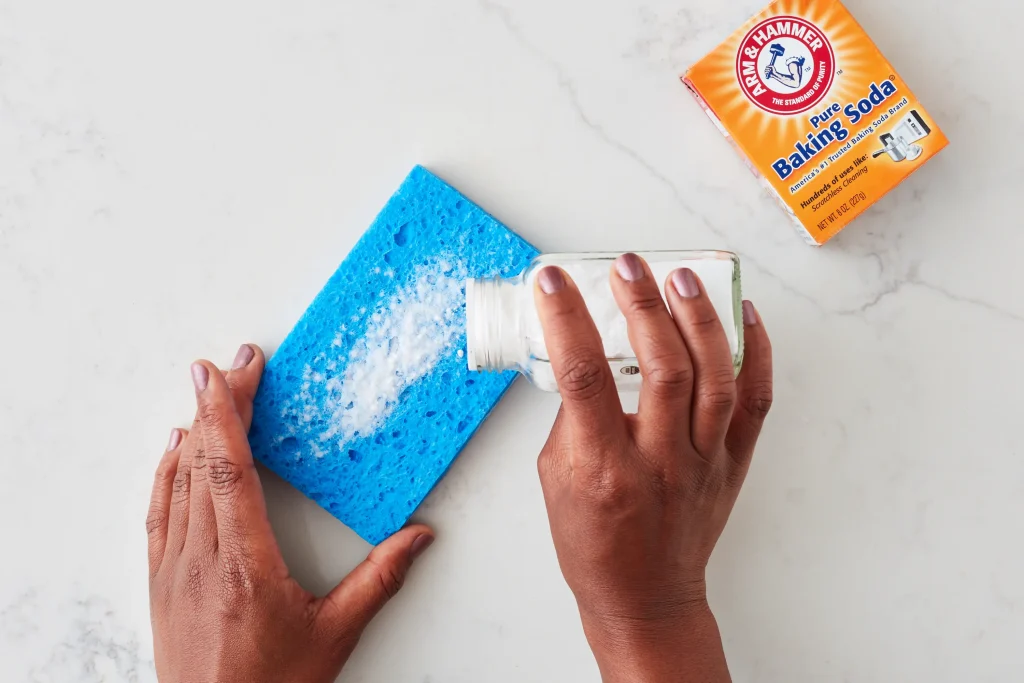If you’re looking for an effective and natural method for cleaning your produce, understanding how to clean fruit with baking soda is a great place to start. Baking soda, a common household item, offers a safe and non-toxic way to remove residues and contaminants from fruit. Here’s a detailed guide on cleaning fruit with baking soda to ensure your produce is both fresh and safe.

Understand Why Cleaning Fruit with Baking Soda is Effective
When learning how to clean fruit with baking soda, it’s important to understand its benefits. Baking soda, or sodium bicarbonate, is a mild abrasive that helps lift dirt and residues from fruit surfaces. Its alkaline properties also aid in breaking down pesticide residues and other contaminants. This makes cleaning fruit with baking soda a natural and effective choice.
Preparing the Baking Soda Solution for Cleaning
To begin cleaning fruit with baking soda, prepare a solution by mixing 1 to 2 tablespoons of baking soda into a large bowl of water. This concentration is usually sufficient to remove most residues from fruits. If dealing with particularly dirty or heavily contaminated fruit, you can increase the amount of baking soda slightly. This solution ensures that your fruit is thoroughly cleaned.
Soaking the Fruit in Baking Soda Solution
Once your baking soda solution is ready, place the fruit into the bowl. Soak the fruit for about 5 to 10 minutes. This soaking period allows the baking soda to interact with the fruit, loosening and lifting away dirt and residues. For more delicate fruits like berries, a shorter soaking time may be necessary to avoid potential damage. Soaking is a crucial step when cleaning fruit with baking soda.
Scrubbing the Fruit if Needed
For fruits with thicker or rough skins, such as apples, potatoes, or carrots, you may need to scrub the surface while it’s soaking in the baking soda solution. Use a soft brush to gently scrub the fruit, which helps ensure that any stubborn residues are thoroughly removed. This step is particularly important when cleaning fruit with baking soda that has textured or uneven surfaces.
Rinsing the Fruit After Cleaning
After soaking and scrubbing, rinse the fruit thoroughly under cold running water. This helps remove any remaining baking soda and loosened dirt or residues. Proper rinsing is a key part of cleaning fruit with baking soda, ensuring that the fruit is clean and safe to eat without any leftover baking soda.
Drying the Fruit Properly
Once rinsed, pat the fruit dry with a clean cloth or paper towel. Drying helps remove excess moisture and prevents the fruit from becoming soggy. Properly dried fruit is not only more pleasant to eat but also less likely to spoil quickly. This step complements the process of cleaning fruit with baking soda by preparing the fruit for storage or consumption.
Handling Different Types of Fruit
When cleaning fruit with baking soda, consider the type of fruit you are handling. For softer fruits like berries, be gentle to avoid damage. For harder fruits, such as apples or squash, the baking soda solution and scrubbing will be more effective. Tailoring your cleaning approach based on the fruit type can help achieve the best results.
Storing Cleaned Fruit
After cleaning fruit with baking soda, store the fruit properly to maintain its freshness. Depending on the type of fruit, store it in a cool, dry place or refrigerate it if necessary. Using clean, dry containers for storage can help extend the shelf life of your fruit.
Regular Cleaning for Best Results
Incorporating cleaning fruit with baking soda into your routine can be highly beneficial. Regularly cleaning your produce helps ensure that it remains free from residues and contaminants. Making this a part of your food preparation routine can contribute to healthier eating habits.
Exploring Additional Uses for Baking Soda
Beyond cleaning fruit with baking soda, this versatile ingredient has many other uses in the kitchen and around the home. From deodorizing to baking, its versatility makes it a valuable tool to have on hand. Exploring these additional uses can maximize the benefits of this simple yet effective ingredient.
In summary, learning how to clean fruit with baking soda involves preparing a solution, soaking, scrubbing, rinsing, and drying. This natural method effectively removes residues and contaminants, making your fruit healthier and more enjoyable. By following these steps and incorporating baking soda into your fruit cleaning routine, you can ensure that your produce is fresh, safe, and ready to eat.

